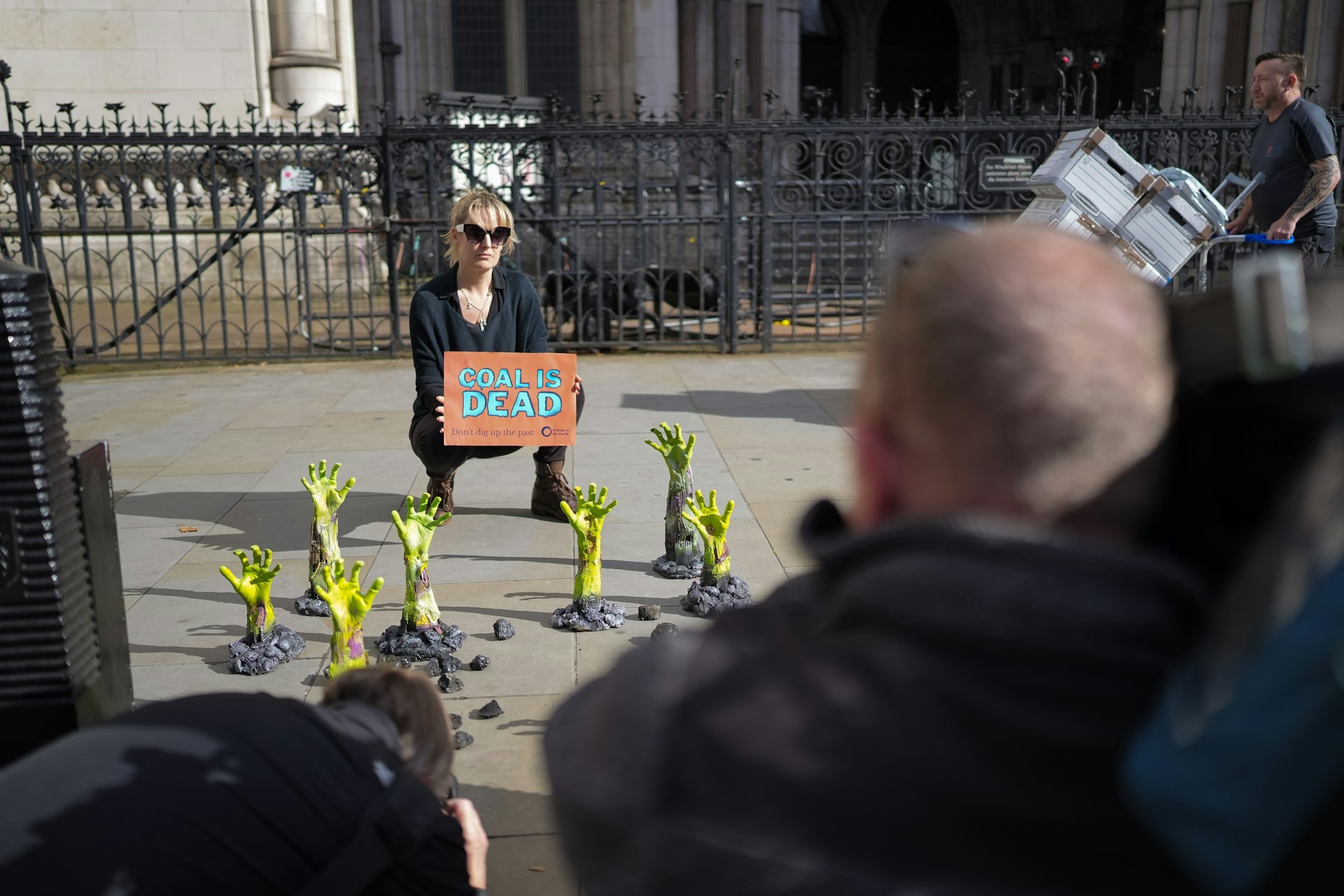Documenting the effects of war on life along the Polish-Ukrainian border
- Text by Alex King
- Photography by Tommy Sussex

Borders are strange places. Many are anti-climatic; often nothing more than two unimpressive huts in the middle of nowhere, straddling a strip of no-man’s land. Some are focal points of hostility and distrust; highly militarised, with guard towers and barbed wire creating an impenetrable barrier – for those without the correct documents, at least. Others are little more than a line on a map or perhaps a stream or river. Borders rarely seem to reflect natural or human reality; in many parts of the world, locals pay them little mind, crossing back and forth freely, as they go about their days.
Especially in Eastern Europe, where borders have moved time and time again, even in the last century alone, the patterns of language, tradition, cuisine and commerce often bear little relation to these demarcation lines. Ideas about identity or nationality, too, often fail to fit neatly into internationally recognised borders. But on each side of the Polish-Ukrainian border, today, there’s one major distinction: between war and peace.



Yet, photographer Tommy Sussex’s The Borders of Poland series shows that even this division is much much less rigid and more porous than we might like to admit. While Tommy never crossed into wartime Ukraine during his journey along Poland’s border with Ukraine and Belarus in January 2023, the war is nowhere to be seen, yet present in every medium format image. Fear lingers beneath every interaction, in every photograph.
Tommy has been visiting Ukraine since 2012, when he connected with Ukrainian photographers through his zine One Giant Arm. Becoming friends and unofficial fixers, local fellow film photography fanatics opened his eyes to the chaotic but creatively charged atmosphere in the country. Hooked, Tommy has returned regularly to Ukraine ever since, documenting the dramatic events of the last decade, such as the Euromaidan revolution.
“My visits to Ukraine began when I met this fascinating group of young Ukrainian photographers; creative people with a really acute sense of art history and social awareness,” Tommy explains. “This was before the student protests which evolved into the Euromaidan revolution, followed by the annexation of Crimea, which eventually lead to the horrors of the current situation. I love the temperament of the Ukrainian people: they have an almost comically realist perspective on the history they’re living within. These projects gained momentum and have become almost a lifelong body of work, to which I recurrently add new chapters through different approaches and formats, from journalism and interviews to zines or exhibitions.”
After the outbreak of full-scale war, Tommy wrestled with how to continue documenting Ukraine’s story. It struck him how the rest of the world is observing this conflict intimately and in near real-time through news reports, social media and ordinary Ukrainians’ smartphone videos – but enjoying a level of abstraction not afforded to Ukrainians, who have to survive through it every day. So, he was drawn to Poland’s border with Belarus and Ukraine and to explore the feelings of people living closest to the conflict but with the degree of separation provided by the border.

“My family was scared,” explains Rafal (pictured top), whom Tommy met as he was preparing for a military re-enactment of Poland’s 1863-4 January Uprising against the Russian empire. “The first few days were a nightmare, trying to secure assets, preparing to evacuate, preparing for the worst. However, when it quickly became clear that Kyiv had not fallen, we rushed to help. I cannot bear the suffering of people living not so far from me. During the first days, I organised local food collection and helped the regional crisis management centre prepare places for refugees. Personally, I’m not afraid because I don’t believe Poland will be invaded. But I try to help friends who are afraid of an attack to get out of a state of panic.”
Far from the capital and centres of political power, those who live in north-east Poland feel little comfort in knowing that all that separates them from a hostile army is a metal border wall – or in some areas, just a river. For the approximately 1.4 million Ukrainian refugees who have arrived in Poland, crossing the border provides much-welcome relative safety. Many Polish people Tommy spoke to were proud of how their communities mobilised to welcome Ukrainians, offering food, water, shelter, Wi-Fi and other support. But for Poles, the Ukrainians’ presence is also a reminder of the proximity of the war next door. Here and across Europe, there’s a sense that the security situation is increasingly precarious.


“Some us have even forgotten about this war that is on the other side of the border. We try to live normally and peacefully, without any tension. But I will say that it is quite disturbing living so close to Ukraine, all the time there are fears that it may move here, to us.”

The post-Cold War optimism for dismantling borders and embracing the free movement of people is long gone. In recent years, Europe’s borders have become increasingly policed and militarised. Another so-called ‘migration crisis’ that began in 2021 on Belarus’ border with Latvia, Lithuania and Poland is a reminder of the violence of borders – and how they can be weaponised. As Europe’s fear of the other has grown, the barbed wire has blossomed on its southern and eastern frontiers. Fortress Europe is a reality, once again.
Placing faith in borders as guarantees of security seems increasingly misplaced. Borders, treaties and international law meant little when Vladimir Putin ordered his infamous ‘special military operation’ and the world’s ‘second most powerful army’ launched a full-scale invasion of Ukraine. Since then, every Russian military exercise and the Wagner PMC’s recent arrival in Belarus have raised concerns across the border in Poland.
“The history of my region is also rich. Countless wars have passed through here, we have many monuments, many patriots, people of science and of the arts, who come from this region. Many years of common culture and territory have made it easier for me to communicate with the Belarusians than with the Germans. Unfortunately, as long as Belarus is in the Russian sphere of influence, the Polish-Belarusian border is a de facto Polish-Russian border.”

In November 2022, a stray Ukrainian air defence missile struck a grain dryer in the Polish village of Przewodów, killing two Polish workers. While locals worry about a repeat of this incident, the real fear is that another mistake or miscalculation triggers a cycle of escalation that drags Poland directly into the war and the country becomes a battleground once again. For these are, after all, what historian Timothy Snyder has christened the ‘bloodlands’ – an area where untold blood and treasure has been expended since the dawn of history, as great powers from east and west have clashed here, wrestling for strategic dominance.
“You hear stories about the Russia-Ukraine war all day on Polish radio,” Tommy recalls. “After all, Poland is the third-largest contributor of military aid to Ukraine, after the US and UK. There are real concerns about escalation. Living on the borders, this is part of their mental landscape. While the conflict is raging in parts of Ukraine, there’s also this unstable peace on the other side of the Ukrainian border and I wanted to make a record of that.”
Each of Tommy’s evocative photographs from the borderlands speak to a complex history, a tense present and an uncertain future. Like the very best photography, the series tells a story that speaks on many different levels, going beyond what’s visible in each image. Tommy’s connection and concern for Ukraine and its people is ever-present. We are made to feel the lingering threats. But perhaps most unsettlingly, the series captures the fragility and temporary nature of peace.
Follow Tommy Sussex on Instagram. The Borders of Poland book comes bundled with his zine, A Message From Bahkmut.
If you are living along the Polish border with Ukraine, Belarus or Kaliningrad and want to be a part this project please contact Tommy to be incorporated into this work.
Latest on Huck

Autism cannot be cured — stop trying
A questionable study into the ‘reversal’ of autism does nothing but reinforce damaging stereotypes and harm, argues autistic author Jodie Hare.
Written by: Jodie Hare

Bristol Photo Festival returns for second edition
After the success of it’s inaugural run, the festival returns this autumn with exhibitions, education and community programmes exploring a world in constant motion through still image.
Written by: Ben Smoke

Documenting the life of a New York gang leader paralysed by gun violence
New photobook ‘Say Less’ is a complex yet humanising look into a life wrecked by gun violence and organised crime.
Written by: Isaac Muk

The woman who defined 80s Hip Hop photography
A new exhibition brings together Janette Beckman’s visionary and boundary pushing images of an era of cultural change and moral panic.
Written by: Miss Rosen

In photos: the dogs of Dogtown
A new photobook documents Venice Beach’s four legged friends and their colourful cast of owners.
Written by: Isaac Muk

Inside the battle to stop coal
As the legal challenge against Britain’s first deep coal mine in 30 years reaches the High court, we talk to activists at the centre of the fight to stop it.
Written by: Ben Smoke









